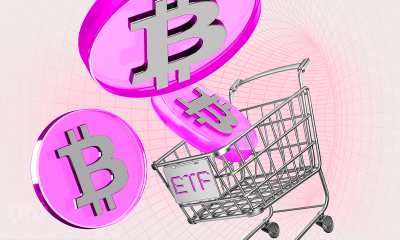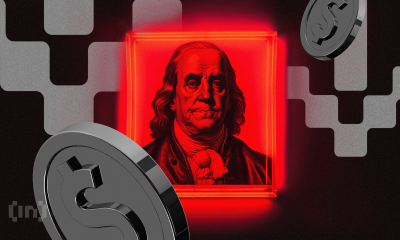Bitcoin
The Future Mining Trends: Gold vs Bitcoin

Bitcoin is challenging the age-old allure of gold. As these two titans of value vie for dominance, the future of mining both assets stands at a crossroads.
Gold, with its long history, symbolizes traditional wealth. Bitcoin, on the other hand, represents the forefront of digital innovation.
Gold vs Bitcoin: Which Is Better Now?
Gold mining has stood the test of time. For centuries, it has been a symbol of wealth and stability. The process of extracting gold from the earth is labor-intensive and environmentally taxing. Yet, it remains a cornerstone of the global economy.
Gold’s tangible nature and historical significance make it a reliable store of value, especially during economic uncertainty.
In stark contrast, Bitcoin mining represents the cutting edge of digital innovation. It involves solving mathematical problems to validate transactions on the blockchain, a decentralized ledger. This process, known as Proof-of-Work (PoW), requires significant computational power and, consequently, large amounts of energy.
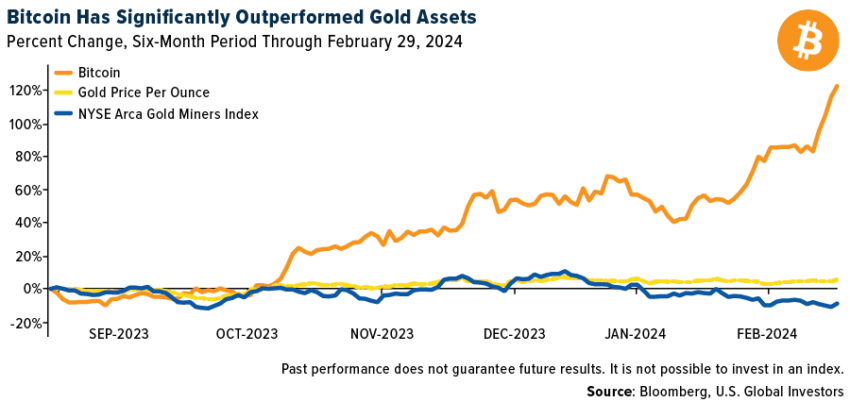
Rob Chang, CEO of Gryphon Digital Mining, told BeInCrypto about Bitcoin miners’ strategic approach. He emphasized that Bitcoin mining can stabilize local grids and support renewable energy projects, offering a unique benefit that traditional gold mining lacks.
“Miners seek low-cost power, usually in areas with low demand or where there might not even be enough demand to support a stable grid. The presence of a Bitcoin miner who uses consistent amounts of power is beneficial for regions where the local area may not have the demand to justify a stable grid,” Chang said.
Both gold and Bitcoin mining have significant environmental footprints. Gold mining often leads to deforestation, water pollution, and habitat destruction. Efforts to mitigate these effects include stricter regulations and the development of more sustainable practices.
However, the inherent physical nature of gold extraction poses ongoing environmental challenges.
Bitcoin mining, on the other hand, is criticized for its high energy consumption. Although Bitcoin’s carbon footprint has drawn scrutiny, the industry increasingly turns to renewable energy sources.
Chang noted that Bitcoin mining’s competitive nature drives efficiency and innovation, which can lead to more sustainable practices over time.
“Bitcoin mining difficulty is an inevitable outcome of Bitcoin’s success and is something miners should expect and in fact embrace since it would only occur if Bitcoin continues to succeed. It incentivizes miners to be as efficient as possible and to innovate to stay as low cost as possible,” Chang added.
Read more: Free Cloud Mining Providers to Mine Bitcoin in 2024
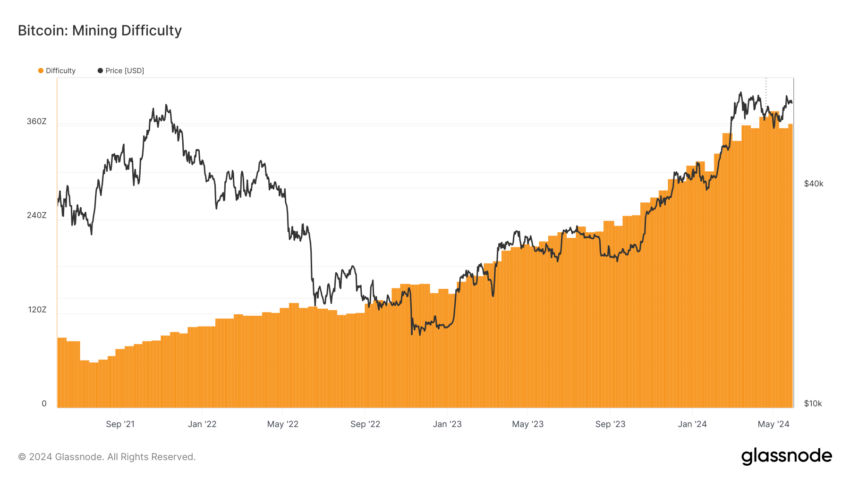
Competitive Mining Market for Both Assets
The economic viability of mining operations is crucial for both industries. Gold’s value is influenced by geopolitical stability, currency fluctuations, and market demand. Despite its stability, the profitability of gold mining can be affected by fluctuating ore grades and increasing production costs.
Bitcoin’s market dynamics are even more volatile. Its value is subject to market sentiment, regulatory changes, and technological advancements.
Chang explained that energy prices are the most critical cost variable for Bitcoin miners. Efficient energy management can make or break a mining operation.
“The best measure of this is the Bitcoin efficiency ratio, which measures the amount of Bitcoin generated per deployed exahash. A good way to think about this is Bitcoin is to oil as hashrate is to oil derricks. The more exahashes or oil derricks a company has, the more Bitcoin or oil they should generate,” Chang told BeInCrypto.
Read more: Top Countries Where You Can Mine Bitcoin Legally
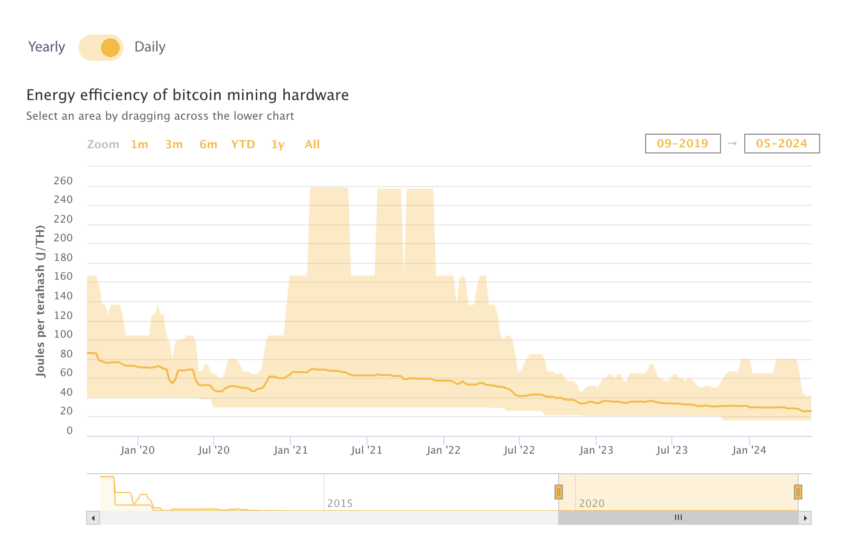
Moreover, hardware competition at the ASIC miner level is welcome and good for the industry. Historically, a few dominant players controlled the mining machine market, squeezing profitability by repricing equipment based on real-time Bitcoin prices. This has made it difficult for miners to compete, as most are forced to provide large upfront payments to procure machines.
The centralization of mining power is a potential concern for the Bitcoin network. While not an issue currently, vigilance is necessary to prevent bad actors from gaining control over the global hashrate. Decentralization is key to ensuring a secure blockchain.
Regulations also play a crucial role in the future of mining. Poor political environments can kill off mining operations altogether. Chang pointed out that most laws impacting Bitcoin mining relate to its energy use.
If a miner is carbon neutral, they can avoid regulations targeting carbon-emitting operations.
Read more: 5 Best Platforms To Buy Bitcoin Mining Stocks Ahead of 2024 Halving
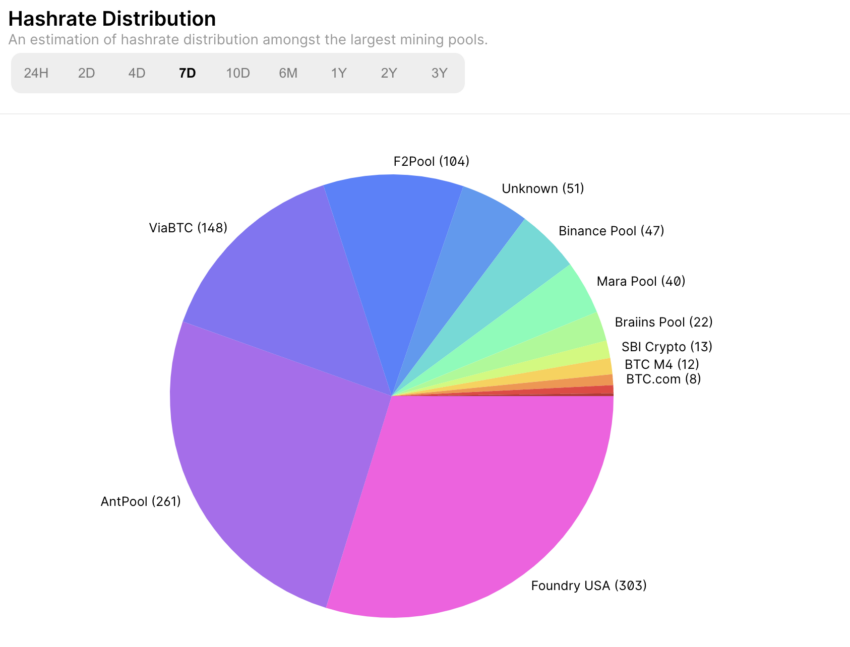
Looking ahead, gold will remain a safe haven asset, but its environmental impact may drive stricter regulations and push for greener mining technologies. With its potential for supporting renewable energy and stabilizing grids, Bitcoin may pave the way for a more sustainable future in digital asset mining.
Disclaimer
Following the Trust Project guidelines, this feature article presents opinions and perspectives from industry experts or individuals. BeInCrypto is dedicated to transparent reporting, but the views expressed in this article do not necessarily reflect those of BeInCrypto or its staff. Readers should verify information independently and consult with a professional before making decisions based on this content. Please note that our Terms and Conditions, Privacy Policy, and Disclaimers have been updated.
Bitcoin
Public Companies are Buying Bitcoin Again After a Brief Pause

Bitcoin is rebounding after tariff chaos, and public companies like Metaplanet are conducting major acquisitions. The firm bought $28.2 million worth of the asset, nearly a $2 million increase from last week.
However, despite this new confidence, Metaplanet’s stock has continued to perform shakily. The crypto market is showing cautious optimism, but that won’t immediately translate into major gains.
Although a few corporate Bitcoin whales briefly paused their big purchases recently, the markets are heating back up again. Metaplanet began buying the dip last week, and Bitcoin has been making steady progress since then.
Today, its CEO, Simon Gerovich, announced a new purchase as BTC rebounds:
“Metaplanet has acquired 330 BTC for ~$28.2 million at ~$85,605 per bitcoin and has achieved BTC Yield of 119.3% YTD 2025. As of 4/21/2025, we hold 4855 $BTC acquired for ~$414.5 million at ~$85,386 per bitcoin,” he claimed.
Trump’s tariff threats caused massive uncertainty and crypto liquidations in the last few weeks. However, since he announced a pause, crypto and industry-related stocks have been rallying.
Whales like Metaplanet and MicroStrategy immediately began buying Bitcoin, and the whole market is rising. The Crypto Fear and Greed Index was recently in Extreme Fear but has since recovered greatly:
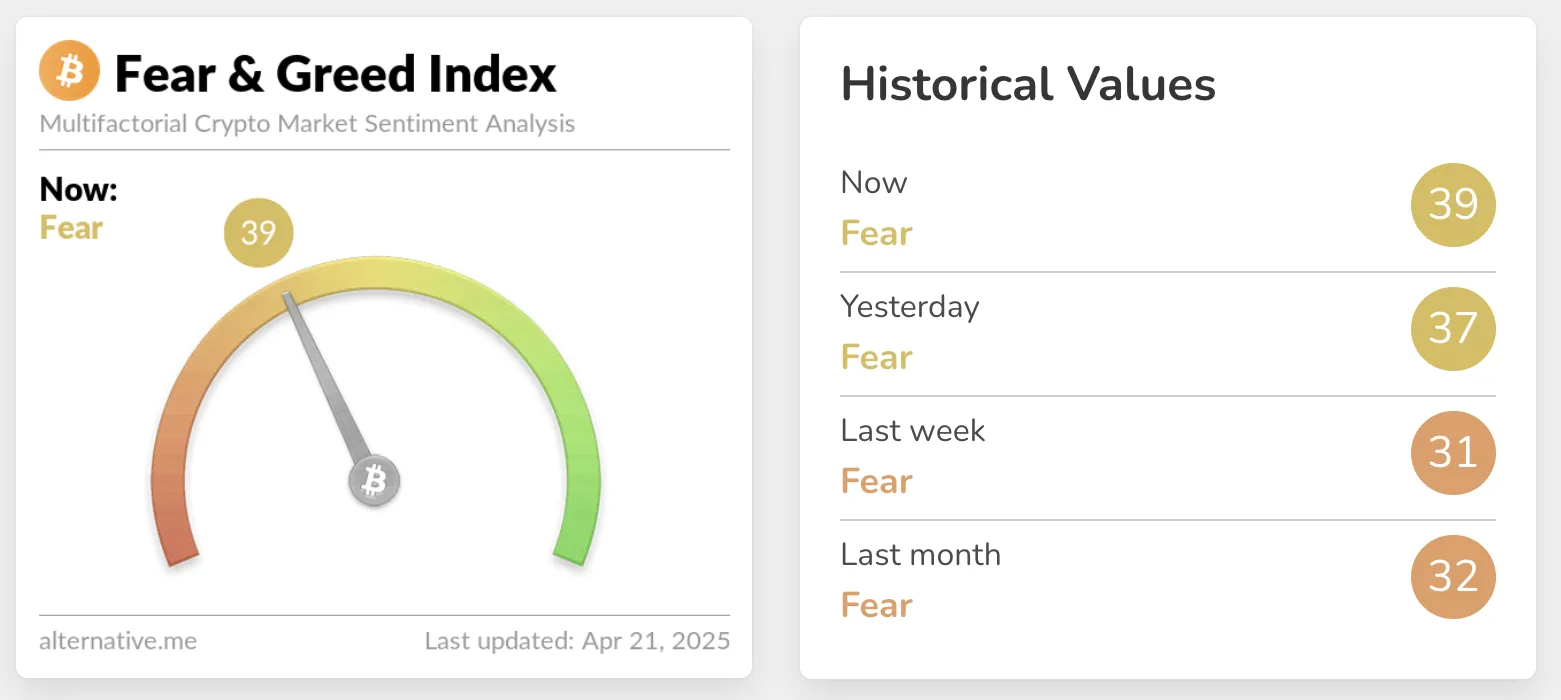
Still, markets are showing cautious optimism, not a full rally. A quick look at some major crypto-related stocks will paint a clearer picture.
MicroStrategy rose over 4% in the last five days and nearly 6% in the last month, but it’s a pillar of confidence in BTC. Metaplanet, a much smaller Bitcoin holder, only fell 1.89% in the last five days but over 20% in the last 30.
In other words, it can be difficult to cleanly connect Bitcoin’s recent successes with major holders like Metaplanet. Compare two prominent US-based crypto miners, Marathon and Riot.
The former recovered from its slump in early April, while the latter only continued to drop. Coinbase, too, has only made brief rallies on a trend of continual decline.
While Bitcoin’s adoption has surged dramatically over the past year, there’s still a lot of uncertainty about tariffs and recession. Metaplanet may be in shaky territory right now, but its confidence in Bitcoin can provide a long-term sense of stability.
Disclaimer
In adherence to the Trust Project guidelines, BeInCrypto is committed to unbiased, transparent reporting. This news article aims to provide accurate, timely information. However, readers are advised to verify facts independently and consult with a professional before making any decisions based on this content. Please note that our Terms and Conditions, Privacy Policy, and Disclaimers have been updated.
Bitcoin
Dollar Dips While Bitcoin Hits New Heights

The US Dollar Index (DXY) has dropped to a three-year low amid reports that President Donald Trump is considering removing Federal Reserve Chairman Jerome Powell.
Meanwhile, the development positively affected Bitcoin’s (BTC) price, pushing it to its highest level since President Trump’s Liberation Day.
Trump’s Push Against Powell Adds Pressure on the Dollar
According to the latest data, DXY has plunged below 99. At press time, it stood at 98.2, representing the lowest value since March 2022.

Economist Peter Schiff highlighted the severity of the situation in the latest post on X (formerly Twitter).
“Gold is up over $50, hitting a record high of $3,380. The euro is above $1.15. The dollar has also fallen below 141 Japanese yen and .81 Swiss francs (a new 14-year low, just 3% above a record low). The dollar Index is below 98.5, a new three-year low. This is getting serious,” Schiff posted.
The dollar’s steep fall comes amid the latest comments made by National Economic Council Director Kevin Hassett on Friday, April 18. Hassett revealed that Trump and his team are actively exploring the possibility of ousting Powell.
His statement was in response to a reporter’s question about whether removing Powell was an option.
“The president and his team will continue to study that matter,” Hassett replied.
In addition, he called out the Federal Reserve for politically motivated actions under Powell’s leadership. Specifically, Hassett criticized the Fed for raising interest rates shortly after Trump’s election and cutting them ahead of the election, moves he claims favored the Democratic Party.
Notably, the growing contempt towards Powell is a response to the Fed’s stance on interest rates. BeInCrypto reported earlier that the Fed will likely not cut rates in May amid rising inflation and President Trump’s tariff pause.
Recently, Trump also blamed the Fed Chair for being slow to act on interest rate cuts. In a post on social media, Trump compared Powell’s actions unfavorably to the European Central Bank (ECB), which is set to implement its seventh interest rate cut.
Trump argued that Powell, whom he described as “always too late and wrong,” should have taken similar measures long ago to address economic conditions.
“Powell’s termination cannot come fast enough!” the President wrote.
The Fed Chair’s potential removal raises serious questions about the Federal Reserve’s independence and its implications for global markets. Powell, whose term as chair extends to May 2026, has previously stated that legal protections prevent his removal and that he intends to serve out his term.
Will Dollar Weakness Drive Bitcoin to New Heights?
Nonetheless, it’s worth noting that if Powell is removed and President Trump successfully persuades the Federal Reserve to cut interest rates, it could likely lead to a crypto market rally. Generally, when the Fed lowers interest rates, the US dollar tends to weaken.
Therefore, investors prefer cryptocurrencies, especially Bitcoin, which is often seen as a hedge against inflation and the weakening of fiat currencies. The inverse relation between the DXY and BTC further solidifies the case for a rally if the dollar depreciates.
In fact, the latest decline in the dollar index has coincided with a notable increase in Bitcoin’s price. The largest cryptocurrency surged to over $87,000 for the first time since April 2.
“USD weakness is driving the rally in crypto,” Sean McNulty, Derivatives Trading Lead at FalconX, told Bloomberg.
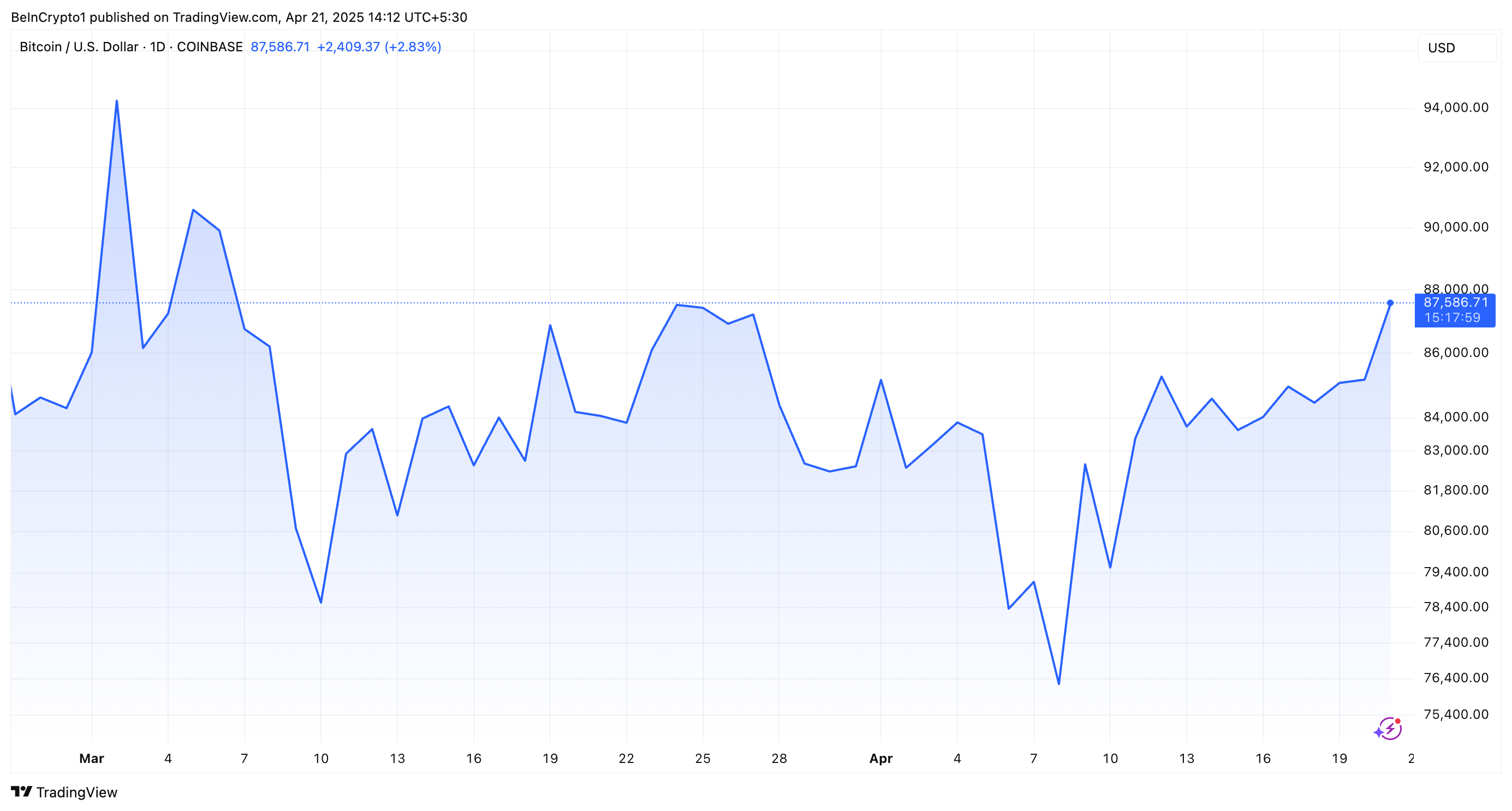
At the time of writing, BTC was trading at $87,586. BeInCrypto data showed that this represented an appreciation of 3.5% over the past day. As markets celebrate these gains, the focus remains on Trump’s next moves and their broader economic consequences.
Disclaimer
In adherence to the Trust Project guidelines, BeInCrypto is committed to unbiased, transparent reporting. This news article aims to provide accurate, timely information. However, readers are advised to verify facts independently and consult with a professional before making any decisions based on this content. Please note that our Terms and Conditions, Privacy Policy, and Disclaimers have been updated.
Bitcoin
Solana, Bitcoin in Texas, and Initia

Several top crypto news stories are in the lineup this week in crypto, spanning various ecosystems with the potential to drive volatility.
This week, traders looking to capitalize on event-specific volatility should monitor the following developments.
This week, the Solana Community Conference, or Breakpoint, is among the top crypto news stories. It kicks off on April 25 and is Solana’s flagship gathering of developers, investors, and innovators.
Historically, Solana Breakpoint is a stage for major announcements, such as new project launches, partnerships, or technological advancements. In recent years, key announcements in similar gatherings have included the Solana Seeker phone or the Firedancer validator client.
According to Solscan data, Solana’s ecosystem boasts nearly 4 million active wallets. Meanwhile, DefiLlama data shows up to $7.37 billion in total value locked (TVL). With these numbers, the Solana community conference could drive positive sentiment for SOL, which was trading at $141.05 at press time.
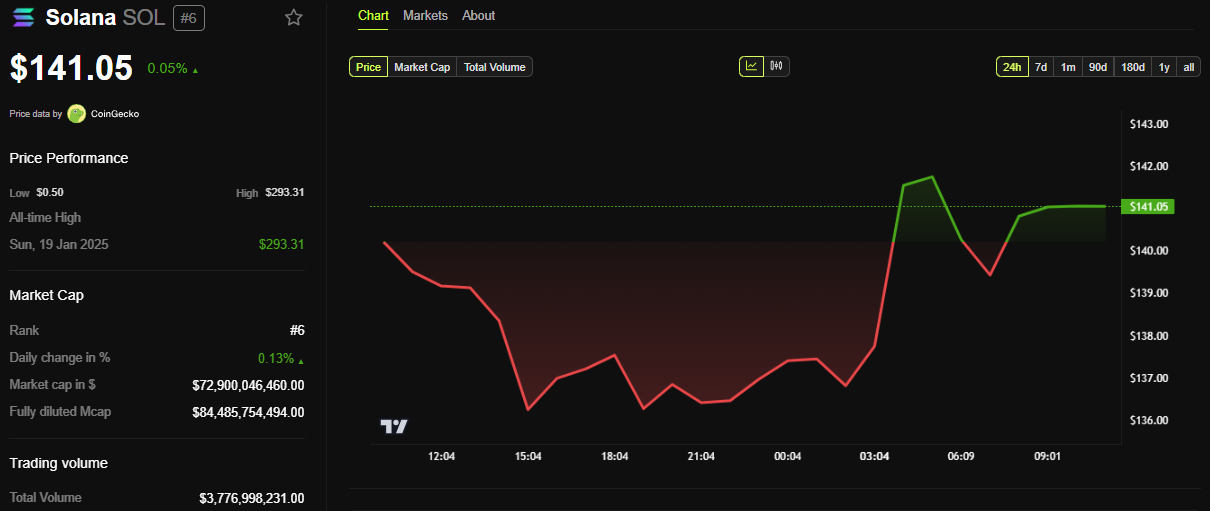
Traders should brace for potential price volatility, as positive news could spark short-term spikes. In the same way, any underwhelming news or network concerns, like past outages, might temper enthusiasm.
Texas Bitcoin Reserve Hearing
Another top crypto news story this week concerns a strategic crypto reserve. On April 23, Texas will hold a strategic Bitcoin reserve hearing, marking a significant event given the state’s pro-crypto stance.
The bill, introduced four months ago, passed the committee with a 9-0 vote and received senate approval with 80% support. Similarly, Dan Patrick, Lieutenant Governor for the State of Texas, listed Bitcoin Reserve as a top priority for 2025.
“My statement announcing the first round of top 40 priority Bills for the 2025 legislative session,” he shared on X (Twitter) in January.
Against these backdrops, the Wednesday hearing could clarify Texas’s approach to institutional Bitcoin adoption. This could set a precedent for other states or federal policy.
A favorable outcome might bolster Bitcoin’s legitimacy, driving demand from institutional investors and positively influencing the BTC price.

Initia’s Mainnet and INIT Token Launch
Also in the headlines, this week in crypto, Initia’s mainnet launch and its token, INIT, debut on Thursday, April 24. This comes after the network revealed a 50 million token airdrop three weeks ago.
The Thursday event will mark a key milestone for the layer-1 blockchain, which is focused on interoperability and user experience. The launch could attract attention from decentralized finance (DeFi) and cross-chain enthusiasts, as Initia aims to simplify dApp interactions.
For traders, INIT’s initial price action will be critical, as new token launches often experience high volatility due to speculative trading.
“Initia INIT Binance Spot Listing Date Announced! Listing on: 24th April 2025. Mainnet will also officially launch on the same day. Airdrop claim date and exact time are yet to be announced,” the network stated recently.
Investors should evaluate Initia’s partnerships and developer adoption, as its success hinges on ecosystem growth.
Injective’s Lyora Mainnet Upgrade
Injective’s Lyora mainnet upgrade, scheduled for Tuesday, April 22, aims to enhance network performance and transaction speed. It would strengthen its position as a DeFi-focused layer-1 chain.
“The Injective Lyora Mainnet is nearly here! Vote today to dramatically enhance Injective infrastructure, performance, and transaction speeds. The official launch is on April 22,” Injective said.
This upgrade could improve user experience and attract developers to Injective’s ecosystem, particularly for derivatives and trading platforms.
Traders should watch INJ’s price for short-term momentum, as successful upgrades often drive positive sentiment.
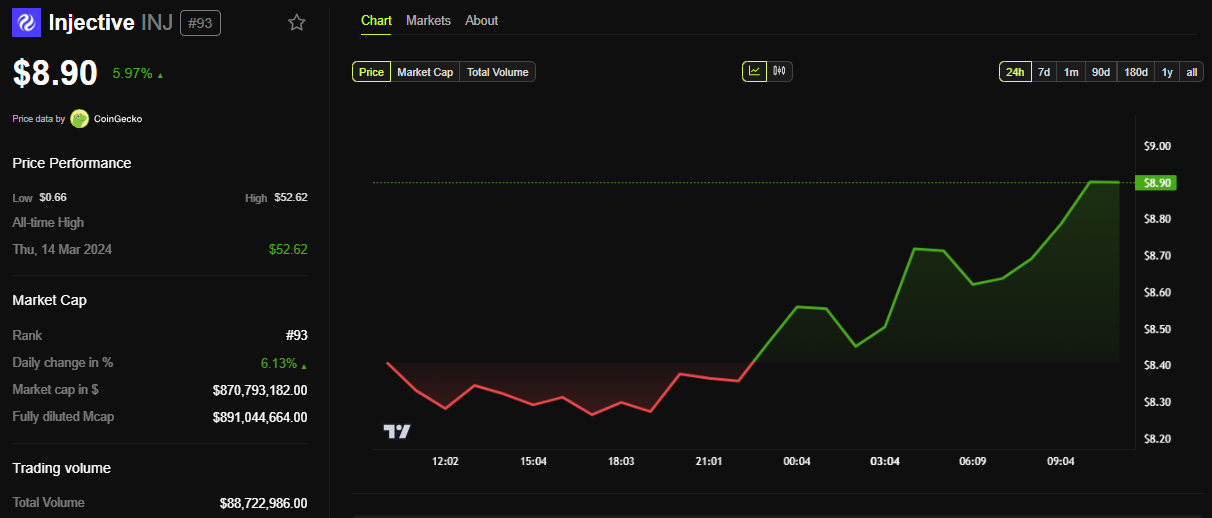
At the same time, investors should consider Injective’s growing TVL (total value locked) and partnerships, like its collaboration with Sonic for AI agent platforms, as indicators of long-term potential.
Disclaimer
In adherence to the Trust Project guidelines, BeInCrypto is committed to unbiased, transparent reporting. This news article aims to provide accurate, timely information. However, readers are advised to verify facts independently and consult with a professional before making any decisions based on this content. Please note that our Terms and Conditions, Privacy Policy, and Disclaimers have been updated.
-

 Bitcoin18 hours ago
Bitcoin18 hours agoUS Economic Indicators to Watch & Potential Impact on Bitcoin
-

 Market21 hours ago
Market21 hours agoBitcoin Price Breakout In Progress—Momentum Builds Above Resistance
-
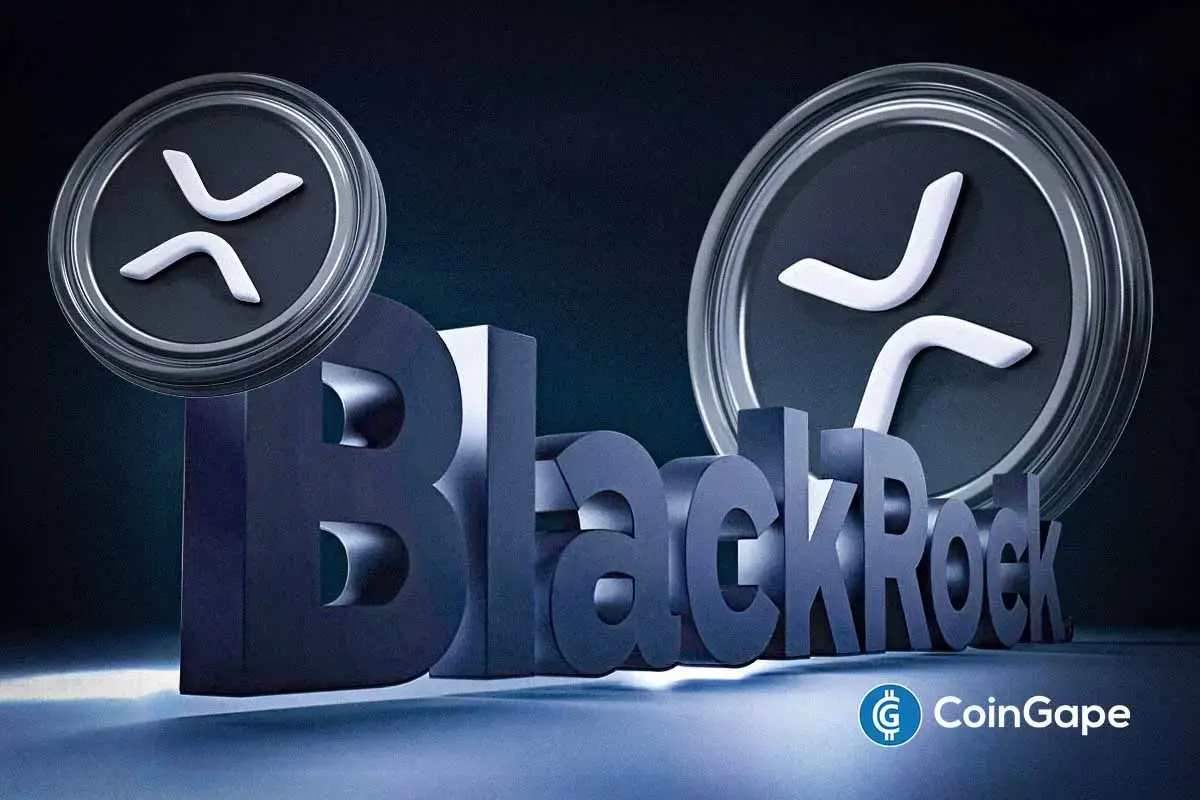
 Altcoin16 hours ago
Altcoin16 hours agoExpert Reveals Why BlackRock Hasn’t Pushed for an XRP ETF
-

 Altcoin21 hours ago
Altcoin21 hours agoExpert Says Solana Price To $2,000 Is Within Reach, Here’s How
-

 Market19 hours ago
Market19 hours agoSolana Rallies Past Bitcoin—Momentum Tilts In Favor of SOL
-

 Market18 hours ago
Market18 hours agoVitalik Buterin Proposes to Replace EVM with RISC-V
-

 Altcoin11 hours ago
Altcoin11 hours agoWill Cardano Price Break Out Soon? Triangle Pattern Hints at 27% ADA Surge
-

 Market17 hours ago
Market17 hours agoXRP Bulls Defend $2.00—Is a Fresh Price Surge Loading?


